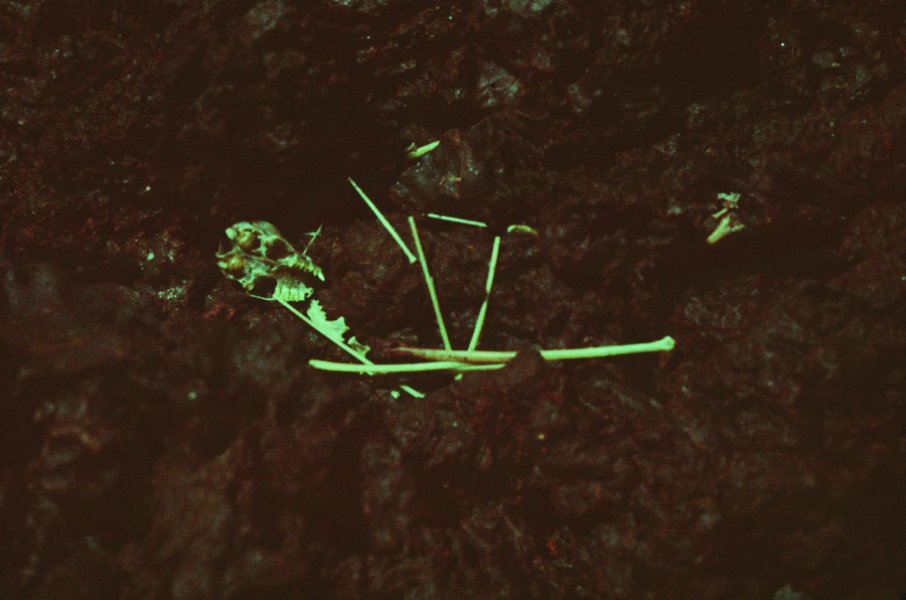The Hawaiian Islands have long been thought to support just one endemic land mammal in the archipelago’s brief geologic history, the Hawaiian hoary bat. But new fossil evidence indicates that a second, very different species of bat lived alongside the hoary bat for thousands of years before going extinct shortly after humans arrived on the islands. The research, published in the journal American Museum Novitates, describes the mysterious bat, named Synemporion keana, whose remains were first discovered in a lava tube more than 30 years ago.
“The Hawaiian Islands are a long way from anywhere, and as a result, they have a very unique fauna–its native animals apparently got there originally by flying or swimming,” said Nancy Simmons, a co-author on the paper and curator-in-charge of the American Museum of Natural History’s Department of Mammalogy. “Besides the animals that humans have introduced to the islands, like rats and pigs, the only mammals that we’ve known to be native to Hawaii are a monk seal, which is primarily aquatic, and the hoary bat. So finding that there actually was a different bat–a second native land mammal for the islands–living there for such a long period of time was quite a surprise.”
Co-author Francis Howarth, an entomologist at the Bishop Museum in Honolulu, was investigating lava tubes in Maui in 1981 when he discovered skeletal remains of the bat. He took the fossils to his colleague Alan Ziegler, a mammalogist at the Bishop Museum, and later they and colleagues found remains on four other islands: Hawaii, Kauai, Molokai, and Oahu.
“The initial specimens included skeletons embedded in crystals on the lava tube wall and thus were likely very old,” Howarth said. “Ziegler eagerly guided me through the bat collection at the Bishop Museum to identify the bat and show me features to look for in order to find additional material for study.”
Ziegler immediately recognized that the small bat was very different from anything else he had seen and started the long process of investigating where it sits in the tree of life. When he died in 2003, the project was put on hold until Simmons was brought in to continue the work.
Smaller than the hoary bat, Synemporion keana first appeared in the fossil record on the islands around 320,000 years ago and survived until at least 1,100 years ago–possibly much later. The two species of bats coexisted for several thousand years. Synemporion keana, which is a kind of vesper, or evening bat, had an array of features that so far have thwarted efforts to identify its closest relatives. Simmons and Howarth hope that future work with ancient DNA extracted from the fossils might help them solve the mystery.
“This extinct bat really is something new, not just a slight variation on a theme of a known genus,” Simmons said. “The new bat contains a mosaic of features from taxa seen on many different continents. At some point, their ancestors flew to Hawaii, but we can’t tell if they came from North America, Asia, or the Pacific Islands–they really could have come from anywhere based on what we know now.”
The authors think that the extinction of Synemporion keana may have been a direct or indirect result of human colonization of the islands and the invasive non-native species that accompanied human explorers and settlers.
“It seems possible that the reduction of native forests and associated insects after human colonization of the islands contributed not just to the extinction of plants, birds, and invertebrates, but also to the extinction of this endemic bat,” Howarth said.
The study can be found at: http://digitallibrary.amnh.org/handle/2246/6641
Key: WFS,Riffin T Sajeev,Russel T Sajeev,World Fossil Society



 March 27th, 2016
March 27th, 2016  Riffin
Riffin 
 Posted in
Posted in  Tags:
Tags: 